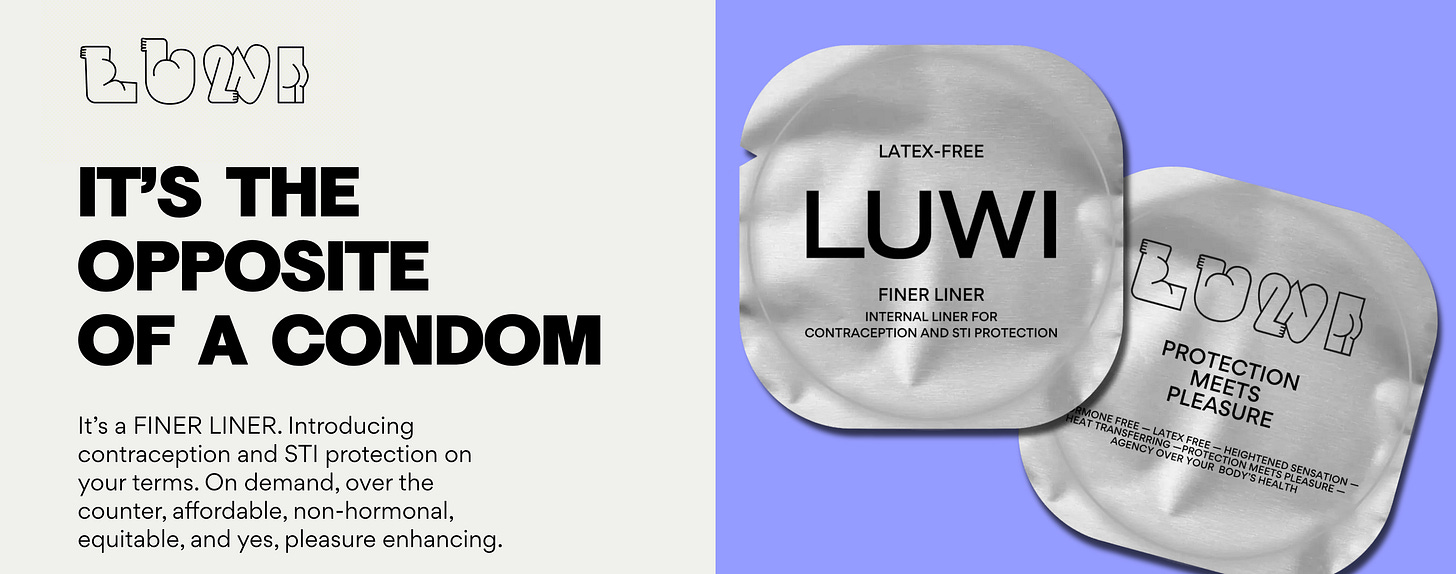New Options to Prevent STIs Post Menopause
How to Make Sure You Have a Positive Experience Without Testing Positive
In my podcast this week, I have a conversation with dating coach Bela Gandhi about how to find love after 50. Here’s the thing. At some point, once you find that perfect person, you are going to need to take your clothes off. And there are a few things you need to know beyond making sure the lighting is just right, your vagina is good to go, and you have the right lube on hand.
Unless your partner was a virgin before he or she met you, avoiding a sexually transmitted infection (STI) is a reality that comes with being sexually active.
Even if you are not single and dating, this is still need-to-know information. Up to 20% of married or partnered women are at risk of exposure due to non-monogamy- consensual or otherwise.
Women are More Likely Than Men to Get an STI
Sexually transmitted infections are more easily passed from man to woman than from woman to man or woman to woman. At any age, a woman is twice as likely as a man to get hepatitis B, gonorrhea, or HIV. Women are less likely to have symptoms than guys. Older women don’t need contraception, and no longer see a gynecologist regularly which means they are not likely to get screened. All this adds up to most sexually transmitted infections not getting diagnosed.
Post-menopause women, if exposed, are at much greater risk for acquiring a sexually transmitted infection than young women.
Unlike your hips, vaginal tissue gets thinner post-menopause. Thinner tissue means that there may be microscopic tears- and even a microscopic tear is an easy portal of entry for teeny tiny viruses and bacteria.
According to the CDC, between 2013 and 2022, among people aged 55 and older, rates of gonorrhea and chlamydia more than doubled. There are more than 30 possible sexually transmitted bacteria, viruses, and parasites. So much for the “He’s been tested for everything” approach.
I know what you are thinking. "I will always insist on a condom, so, I have nothing to worry about, right?" Wrong.
Even if he agrees to wear a condom…
And even if the condom doesn’t break, roll off, or leak, sometimes the condom doesn't go on until there has been plenty of skin-to-skin contact. HPV, herpes, and other STIs are not in semen but live on the skin, so intercourse is not necessary to transmit them.
Since a condom covers only the penis, short of strapping on a Hefty bag to cover a man’s scrotum, anus, and surrounding skin, there is no such thing as total protection.
There’s another issue that gets in the way of condom use, even in the well-intentioned. Older women are generally dating … older men. The older a guy gets, the more difficulty he’s going to have getting and maintaining an erection under the best of scenarios. Add a few glasses of wine and a condom, and it’s game over.
The reality for many men over the age of 60 is that putting on a condom often puts an end to the party.
If a woman wants to get anything accomplished, she often has no choice but to forgo any extra distractions. Since contraception is no longer an issue and a good man is hard to find, but a hard man is just about impossible to find, she usually puts up less of a fight.
So while my patients all intend to use condoms, they often don’t, since the situation can be “lose the condom or lose the guy.”
Reasons Older Women Are at Risk of Acquiring an STI
A lot of guys won’t, or can’t use condoms
Post-menopause vaginal and vulvar tissue is thin and vulnerable
At least 50% of women over the age of 40 are single and with new partners
3-7% of partnered women over age 40 are consensually non-monogamous
~18-20% of partnered women and men over age 40 cheat on their partners
What About Oral Sex?
Post-menopause women have a lot of oral sex- not just because they like it, but because it is far, FAR more likely to result in orgasm than intercourse. Oral sex is also the obvious alternative when penile-vaginal penetration is not an option, either because he isn’t able to maintain an erection, or because of painful intercourse. And of course, many women are sexually active with women.
Even when a penis is not in the picture, STIs are still an issue.
Women who receive oral sex can acquire and transmit herpes, HIV, HPV, syphilis, and chlamydia. It is far more likely for herpes to be transmitted during oral sex than intercourse. A male condom is not a solution when it comes to oral sex whether it is with a woman and a man, two women, or any other combination you can think of.
One solution is to stay home, watch Sex in the City reruns, and stick to self-stimulation. A better solution is to take matters into your own hands and protect yourself using something other than a male condom. This also holds for women who have sex with women.
Options to Protect the Vulva
When HIV first became a health hazard, there was a lot of buzz about using dental dams, small sheets of latex used by dentists, for protection. The idea is to place the latex square over the vulva during oral sex. Here’s the problem: have you ever seen dental dams in a store? Have you ever actually spoken to someone, other than a dentist, who uses dental dams? Neither have I.
But I have good news for you. You don’t need to be Martha Stewart to make your version of a dental dam. Take an un-lubricated condom (one he’s not using!) and cut off the tip. Then cut through one side of it to make a square of latex, which can then be stretched over your vulva.
Having said that, whether your dental dam is the real deal, or the DIY version, it still has to be held in place. Not exactly user-friendly. But, in a pinch, it’s good to know how to make your own.
Plastic Wrap?
If you are thinking, “Why not just cover your vulva with plastic wrap, as in the plastic wrap that is intended for food storage?” Great idea except, plastic wrap intended for food has never been tested for this purpose. Products intended for microwave use are too porous to keep out infectious bugs. So the next time you are in your grocery aisle and the lady in front of you has just put a jumbo box of plastic wrap in her cart, consider that it may not be for her leftovers, and you may want to warn her that it’s not a great idea.
Anti-STI Underwear
The best way for women to enjoy oral sex without feeling like they are risking getting whatever is lurking in the giver’s mouth, or inadvertently passing on whatever is on their own lips are disposable latex “sex” panties. Lorals™ has received FDA clearance to be used to prevent transmission of an STI during oral sex. They are thin enough to have all the sensations of oral or any other kind of non-penetrative sex while providing a barrier between the vulva and tongue. And yes they come in multiple colors and styles.
An “Up and Coming” Option to Protect Both the Vulva and Vagina
A new product is on the horizon- a product that is the opposite of a condom, a product that is completely woman controlled, a product that will prevent not only STIs that are transmitted via the vagina (that’s a catchy phrase- right?) but also offers vulvar protection.
LUWI™ is a “finer liner’ that will soon be available over the counter*. While most post-menopause women don’t care about contraception, it is the perfect option to prevent STIs during oral, vaginal, or anal sex. It is also great for women who are using medication on the vulvar or have a vulvar skin condition.
*Full disclosure -I am a consultant for LUWI.
Take a Preventive Antibiotic?
You may have heard some buzz about taking doxycycline within 72 hours after sex to prevent an STI. Sounds like a great plan except there are a few problems with that strategy.
Doxycycline will decrease the risk of syphilis, chlamydia, and, in some studies, gonorrhea. But doxycycline won’t touch the other 30 sexually transmitted infections.
Taking a prophylactic antibiotic to prevent an STI has only been studied in gay and bisexual men and transgender women. It doesn’t mean it won’t work in post-menopausal women, it just hasn’t been tested.
Is the HPV Vaccine an Option?
The most common sexually transmitted infection out there is Human Papilloma Virus.(HPV) HPV is responsible for not only cervical cancer but also vulvar, vaginal, anal, and oral cancers. The HPV vaccine to prevent transmission was approved in 2006 which means it is the rare post-menopause woman that has been vaccinated. The HPV vaccine is only FDA-approved to be administered to women up to age 45, but it is not illegal or unsafe to give it to older women. But that’s another post for another time.









Lots of great information in here, and some very well thought out puns to boot!
Wow - I learned a lot from this. Thank you!